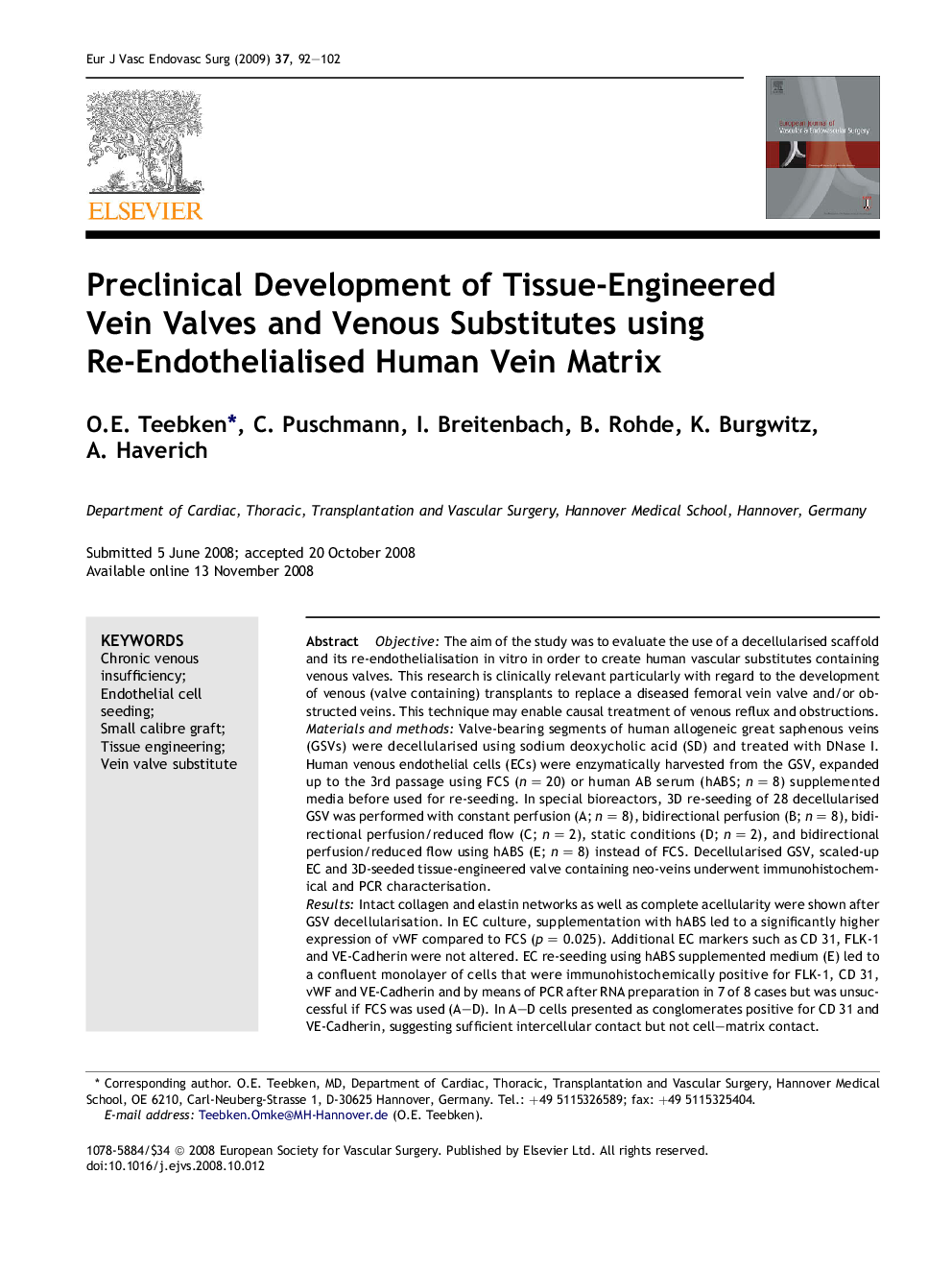| کد مقاله | کد نشریه | سال انتشار | مقاله انگلیسی | نسخه تمام متن |
|---|---|---|---|---|
| 2914049 | 1575523 | 2009 | 11 صفحه PDF | دانلود رایگان |

ObjectiveThe aim of the study was to evaluate the use of a decellularised scaffold and its re-endothelialisation in vitro in order to create human vascular substitutes containing venous valves. This research is clinically relevant particularly with regard to the development of venous (valve containing) transplants to replace a diseased femoral vein valve and/or obstructed veins. This technique may enable causal treatment of venous reflux and obstructions.Materials and methodsValve-bearing segments of human allogeneic great saphenous veins (GSVs) were decellularised using sodium deoxycholic acid (SD) and treated with DNase I. Human venous endothelial cells (ECs) were enzymatically harvested from the GSV, expanded up to the 3rd passage using FCS (n = 20) or human AB serum (hABS; n = 8) supplemented media before used for re-seeding. In special bioreactors, 3D re-seeding of 28 decellularised GSV was performed with constant perfusion (A; n = 8), bidirectional perfusion (B; n = 8), bidirectional perfusion/reduced flow (C; n = 2), static conditions (D; n = 2), and bidirectional perfusion/reduced flow using hABS (E; n = 8) instead of FCS. Decellularised GSV, scaled-up EC and 3D-seeded tissue-engineered valve containing neo-veins underwent immunohistochemical and PCR characterisation.ResultsIntact collagen and elastin networks as well as complete acellularity were shown after GSV decellularisation. In EC culture, supplementation with hABS led to a significantly higher expression of vWF compared to FCS (p = 0.025). Additional EC markers such as CD 31, FLK-1 and VE-Cadherin were not altered. EC re-seeding using hABS supplemented medium (E) led to a confluent monolayer of cells that were immunohistochemically positive for FLK-1, CD 31, vWF and VE-Cadherin and by means of PCR after RNA preparation in 7 of 8 cases but was unsuccessful if FCS was used (A–D). In A–D cells presented as conglomerates positive for CD 31 and VE-Cadherin, suggesting sufficient intercellular contact but not cell–matrix contact.ConclusionsTreatment with SD and DNase enables complete decellularisation of human valve containing veins whereas 3D matrix components such as collagen and elastin remain preserved. The lumen of the scaffold including the valves can be successfully re-seeded with a human EC monolayer in a 3D bioreactor. There is substantial evidence that hABS and not FCS is essential for the completion of cell–matrix contacts in human veins.
Journal: European Journal of Vascular and Endovascular Surgery - Volume 37, Issue 1, January 2009, Pages 92–102